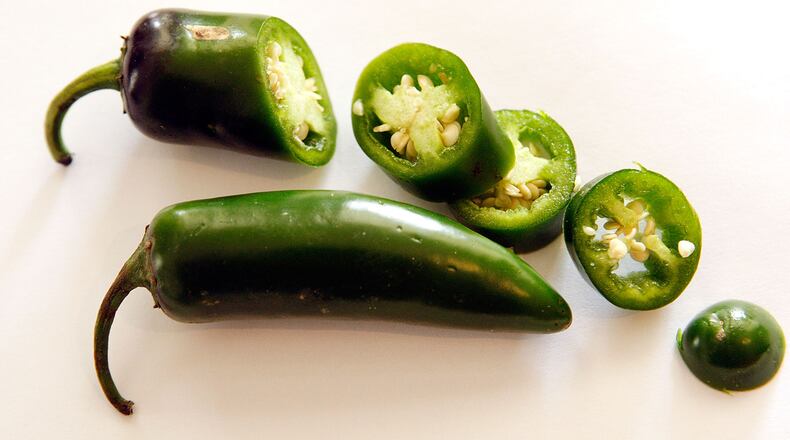- Will Smith dined with cop accused of killing Cardell Hayes' father
- Middle school teacher accused of sending nude photos to student via Snapchat
- Teacher who had sexual relationship with student said his grades improved
- Watch: Video of snowboarder chased by bear may be fake
- Teacher arrested after video shows her hitting student
If you've ever started a small kitchen fire in your home, you aren't alone. In fact, cooking was the leading cause of reported home fires and the third leading cause of home fire deaths between 2009 and 2013, according to the National Fire Protection Association (NFPA).
The problem is many Americans don't realize just how potentially dangerous cooking can be -- and if you don't think your small kitchen flame can really do that much harm, think again. Cooking fires in the U.S. cause an annual average of 430 deaths and $1.1 billion in direct property damage.
Read more: 4 food safety mistakes you're probably making at home [ClarkHoward.com]
And while several different factors can cause these types of fires, there's one piece of cooking equipment that's often underestimated when it comes to its potential dangers: the microwave.
In order to help you stay safe -- and keep your kitchen from going up in flames -- here are some reminders about how to properly use your microwave.
15 things to never put in the microwave
1. Paper bags
Paper bags can release toxins that can potentially catch fire.
2. Take-out containers
If the container has any metal, don't put it in the microwave! Metal can easily catch fire in the microwave -- and cause serious damage.
3. Yogurt & butter containers
Plastic containers like yogurt cups and butter containers are meant for one-time use. They aren't made to withstand the high temperatures and heat of a microwave, and if heated they can melt and potentially release chemicals into the food.
4. Eggs
If you want to make hard-boiled eggs, boil them in a pot on the stove. Putting eggs in the microwave will likely just leave you with a huge mess -- after the high temperatures cause them to explode.
5. Styrofoam
This is one of those things people like to test -- thinking, "if I just put it in for a few seconds, it'll be fine..." Nope, don't do it!
Styrofoam cups, bowls, take-out containers -- whatever the type, don't put it in the microwave. Styrofoam is a type of plastic, which doesn't mix well with microwave temperatures.
6. Grapes
They will explode and could catch on fire.
7. Cookware with metal trim
You may have plates or bowls with a pretty metal trim -- and when it comes to whether you should put them in the microwave, remember the word metal. That's a red flag for do not put in microwave!
8. Sauce or dip without a cover
Talk about a mess... Putting any type of sauce or dip in the microwave without a cover (even just a paper towel) will just end up leaving a HUGE mess.
9. Plastic storage containers
Again, the keyword being plastic -- meaning, do not put in the microwave! Certain Tupperware-type plastic containers will have a label if they are microwave safe. If you don't see that label, check the manufacturer's website -- or to be on the safe side, just don't microwave it.
10. Hot peppers
First, they can catch fire. Second, when you open the microwave, the heat can cause the peppers to release chemicals that can burn your eyes -- which sounds great to absolutely no one.
11. Stainless steel travel mugs/bottles
Many people microwave travel mugs not realizing they're made of stainless steel -- which does not belong in the microwave. The stainless steel will not only block the heat from warming whatever's in your mug, but nuking it can also damage your microwave. If the mug is plastic, check the bottom for a label to see if it's marked as microwave safe.
12. Frozen meat
Frozen meat is tricky to microwave, because depending on how thick it is, it's difficult to make sure the inside is fully cooked. Plus, if the heat isn't evenly distributed, bacteria can grow and spread on the food. So if you need to defrost meat that was in the freezer, just leave it in the fridge overnight.
13. Aluminum foil
It's metal. So if your leftovers -- or anything else you want to heat up in the microwave -- has aluminum foil over it, take the foil off before putting it in! The aluminum foil can catch fire.
14. Nothing
When there's nothing in the microwave to absorb the microwaves, the microwave can actually catch fire -- and at the very least, turning it on with nothing in there can damage the microwave.
15. Be careful with "microwave safe" labels
If something has a "microwave safe" label, that often means you can microwave it without damaging the product or your microwave. That doesn't mean the product can't get extremely hot and become unsafe for you to touch after it's been in the microwave.
If you aren't sure about how a certain bowl or other container will work in the microwave, heat the liquid or food in something else and then transfer it to that container.
About the Author
The Latest
Featured

